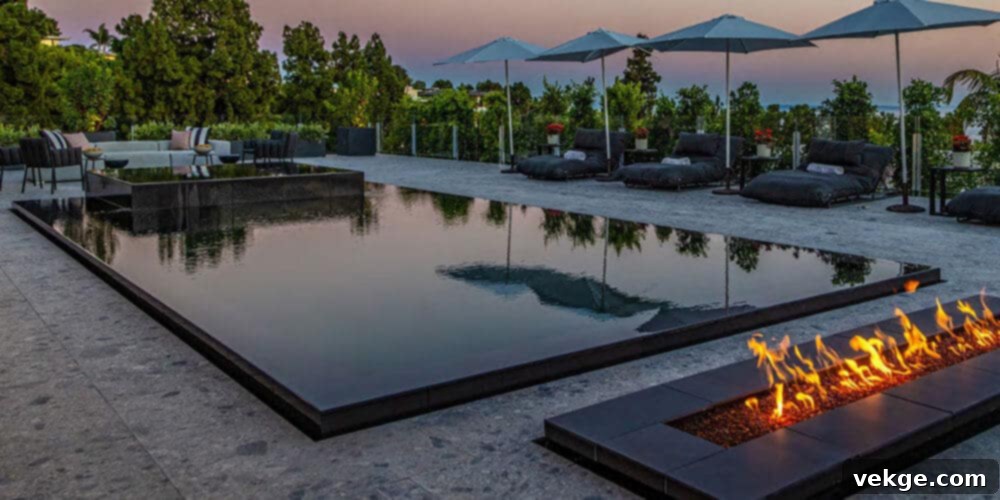Ultimate Guide to Black Bottom Pool Maintenance: Keeping Your Dark Oasis Pristine
A black bottom pool stands out as a luxurious and distinctive addition to any home, offering a unique aesthetic appeal that sets it apart from traditional light-colored pools. Its deep, reflective surface creates an illusion of depth, often mirroring the sky and surrounding landscape, resulting in a captivating natural lagoon effect. This mesmerizing appearance transforms your backyard into a modern, sophisticated, and tranquil retreat. However, to maintain its stunning clarity, sparkling allure, and inviting ambiance, a black bottom pool requires dedicated and routine care, much like any other swimming pool.
One of the unique challenges associated with dark-bottom pools is the difficulty in spotting and removing black spots. These are typically caused by black algae, a persistent and resilient organism—more accurately, a type of cyanobacteria—that thrives on porous swimming pool surfaces such as concrete, gunite, and plaster. Black algae is notoriously stubborn, forming thick, protective layers that make it resistant to standard sanitizers. It flourishes in both sun and shade, often creeping into corners, staircases, and other hard-to-reach areas, where its dark color can blend seamlessly with the pool’s finish, making early detection a significant hurdle.
In this comprehensive guide, we will delve into the essential procedures, expert advice, and best practices for effectively maintaining and cleaning your black bottom pool. By understanding and implementing these strategies, you can ensure your dark oasis remains a pristine and inviting haven for relaxation and enjoyment throughout every season.
Essential Steps for Maintaining and Cleaning Your Black Bottom Pool
Maintaining a black bottom pool goes beyond basic cleaning; it’s about understanding its unique characteristics and challenges. The dark surface, while beautiful, requires particular attention to prevent issues like hidden algae growth and chemical imbalances. Here are the crucial steps to keep your pool in immaculate condition.
1. Skimming and Surface Cleaning
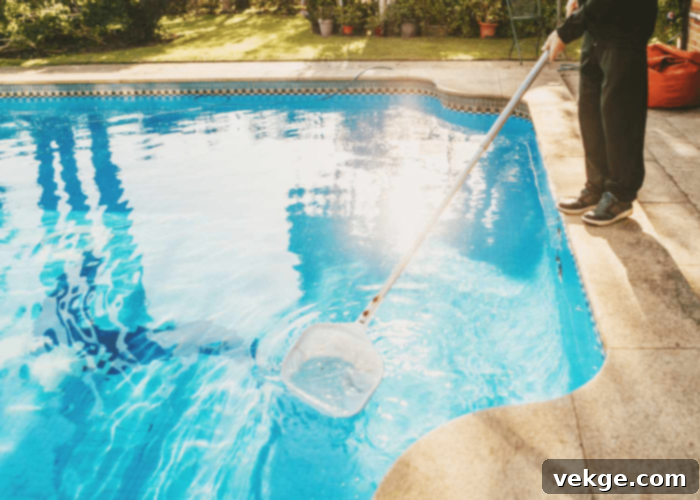
The initial and most fundamental step in black bottom pool care is routine skimming. Leaves, twigs, insects, and other debris can quickly accumulate on the water’s surface, not only detracting from the pool’s visual appeal but also degrading water quality by introducing phosphates and other contaminants. Regular skimming prevents this organic material from sinking to the bottom, where it can decompose, cause stains, and become food for algae. Utilize a long-handled skimming net daily, or consider an automated pool skimmer for effortless removal of these undesirable elements. The cleaner your surface, the less work your filter has to do, and the clearer your water will remain.
2. Brushing Pool Walls and Floor
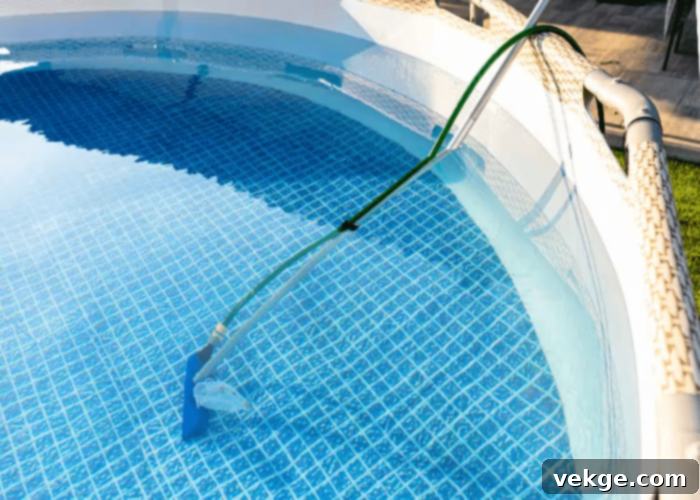
The dark finish of a black bottom pool, while elegant, can unfortunately camouflage debris and nascent algae growth, especially the stubborn black algae. Regular brushing of the pool’s walls and floor is therefore paramount to dislodge any clinging particles, prevent stains, and disrupt algae colonies before they take hold. For plaster or gunite surfaces, use a stiff nylon-bristled pool brush to prevent scratching the finish. If your pool has a vinyl liner, opt for a softer nylon brush. Pay meticulous attention to problem areas like coves, steps, ladders, and corners, where material tends to collect and algae often begins to grow. Brushing at least 2-3 times a week is recommended, pushing dislodged particles towards the main drain for filtration.
3. Thorough Vacuuming
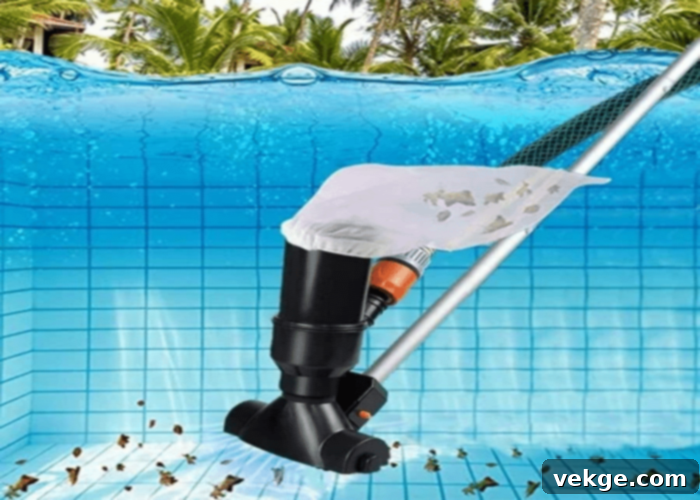
After brushing, vacuuming is the next critical step to remove fine dirt, settled debris, and any dislodged algae from the floor of your black bottom pool. You have options here: a manual pool vacuum provides hands-on control and ensures every inch is cleaned, which can be particularly useful for tackling specific dirty spots. Alternatively, an automated robotic pool vacuum offers convenience and can keep the pool bottom consistently clean with minimal effort. Whichever method you choose, ensure your pool’s filtration system is operating efficiently during vacuuming to effectively capture the removed contaminants. Regular vacuuming (at least once a week, more if there’s heavy debris) prevents particles from settling and causing stains or becoming nutrient sources for algae.
4. Optimal Water Circulation and Filtration
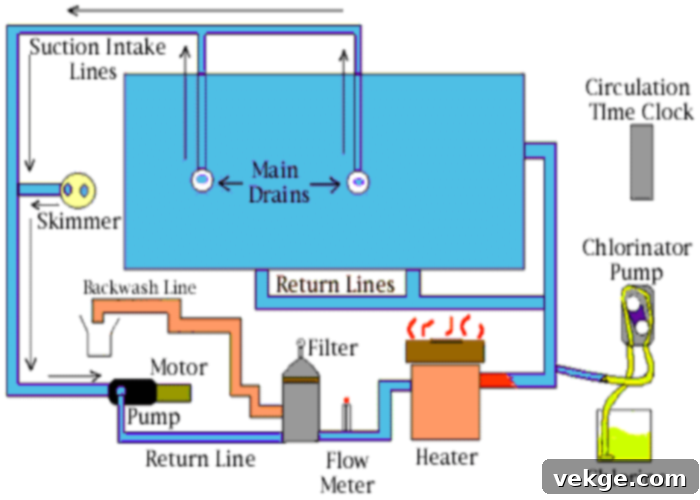
Proper water filtration and circulation are non-negotiable for maintaining clear, healthy pool water, especially in a black bottom pool where clarity is key to its aesthetic. Your pool’s pump and filter are its “kidneys,” constantly cleaning the water. To ensure optimal performance, run your pool’s filtration system for a minimum of 8 to 12 hours every day, adjusting based on usage and environmental factors. Regularly clean or backwash the filter as necessary, following manufacturer guidelines, to prevent obstructions and maintain efficient water flow. Good circulation also plays a vital role in evenly distributing the various chemicals used to sanitize and balance the water, ensuring they reach every part of the pool and work effectively against contaminants and algae.
5. Precise Water Chemistry Balance

Maintaining balanced water chemistry is perhaps the most crucial aspect of pool care, and it holds even greater importance for black bottom pools. The dark color naturally absorbs more heat and sunlight, which can accelerate chemical decomposition and evaporation, requiring more frequent monitoring and adjustments. Regularly test your pool water for pH (7.4-7.6 ideal), chlorine (1-3 ppm), total alkalinity (80-120 ppm), and calcium hardness (200-400 ppm). Imbalanced water can lead to algae growth, staining, equipment corrosion, and discomfort for swimmers. High pH can reduce chlorine effectiveness, while low pH can be corrosive. Consistent testing (2-3 times a week) and precise chemical adjustments are key to preventing issues like discoloration of the dark finish and ensuring a safe, sparkling swimming environment. Consider also monitoring Cyanuric Acid (CYA) levels, which stabilize chlorine but can also reduce its efficacy if too high.
6. Strategic Shock Therapy
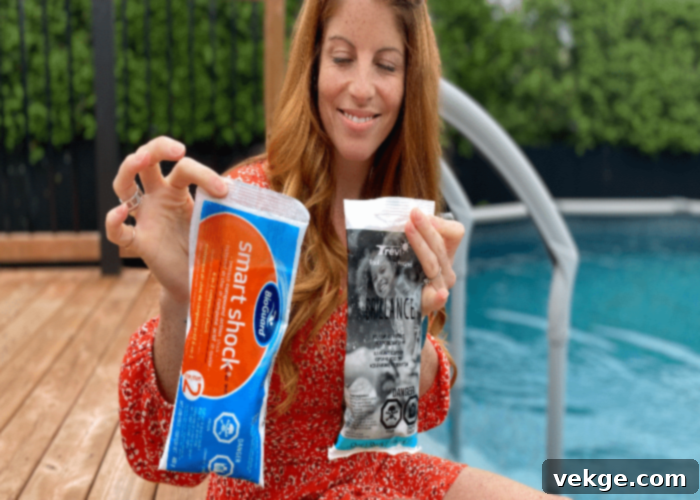
Regularly shocking your pool with high doses of chlorine (or a non-chlorine alternative) is vital to oxidize pollutants, eliminate resistant microorganisms, and restore water clarity. This process, often called “super-chlorination,” breaks down chloramines (spent chlorine compounds that cause odor and irritation) and destroys algae spores and bacteria. For black bottom pools, while chlorine is generally safe for pool finishes, some owners prefer non-chlorine shock products to avoid any potential, albeit rare, bleaching or fading concerns. However, regular chlorine shock remains the most effective method for deep cleaning and combating stubborn contaminants like black algae. Always follow the manufacturer’s guidelines for the specific shock therapy product you choose, applying it at dusk or night to minimize UV degradation, and ensure proper circulation after treatment. Shock your pool weekly during heavy use seasons or after heavy rain, and whenever water appears cloudy or algae begins to form.
7. Targeted Algae Control (Especially Black Algae)
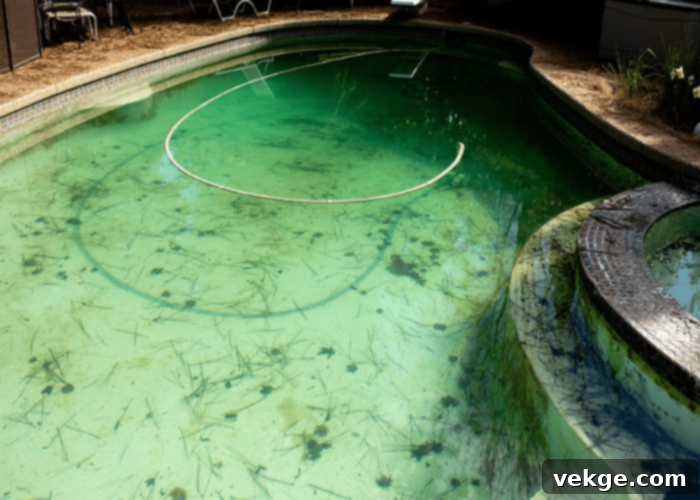
Black bottom pools, due to their greater absorption of sunlight, can sometimes experience higher water temperatures, which can be conducive to algae growth if not properly managed. While preventative measures like consistent brushing, balanced water chemistry, and good circulation are crucial, targeted algae control is often necessary. Regularly use a quality algaecide as a prophylactic measure. However, when dealing specifically with black algae, a more aggressive approach is required:
- Brush vigorously: Black algae forms a protective layer. You must break through this layer by scrubbing the spots with a stiff-bristled brush. For very stubborn spots, some pool owners even use a pumice stone on gunite/plaster, but use extreme caution to avoid damaging the surface.
- Spot Treatment: For persistent black algae spots, directly apply a trichlor chlorine tablet (wearing gloves!) to the affected area. Hold it against the spot for a few seconds to burn through the protective layer. Never allow tablets to sit on the pool surface for extended periods as this can cause etching or permanent bleaching.
- Shock Treatment: After brushing and spot treatment, heavily shock the pool to kill the exposed algae.
- Filter Cleaning: Black algae spores can get trapped in your filter. After treatment, thoroughly backwash or clean your filter to remove any lingering spores.
Consistency is key to preventing black algae from taking hold and quickly eradicating it if it appears.
8. Regular Maintenance of Pool Equipment

The efficiency of your pool’s cleaning and filtration relies heavily on its equipment. Therefore, do not overlook the importance of regularly inspecting and maintaining your pool’s filters, pumps, and skimmer baskets. Frequently clean the debris from skimmer and pump strainer baskets to prevent blockages that can reduce flow and strain your pump. Depending on your filter type (sand, cartridge, or DE), establish a routine for backwashing, cleaning, or replacing filter media. A dirty or inefficient filter cannot adequately remove contaminants, leading to cloudy water and increased chemical demand. Periodically check your pump for unusual noises or leaks, and inspect all seals and O-rings for wear. Well-maintained equipment not only ensures a cleaner pool but also extends the lifespan of your system and saves on energy costs.
9. Professional Expert Inspections
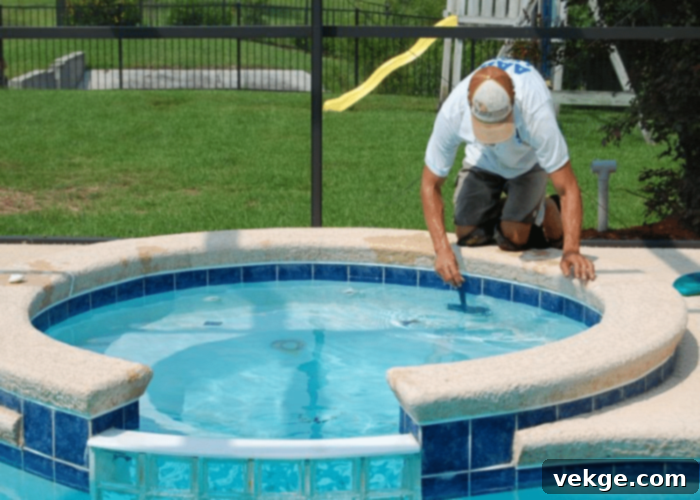
Even with diligent DIY maintenance, planning routine expert inspections is highly recommended to evaluate the overall condition of your black bottom pool. Professional pool technicians possess specialized knowledge and tools to detect potential problems early, such as subtle leaks, equipment malfunctions, or the initial stages of structural issues, which might be missed during regular owner checks. They can provide valuable recommendations for upkeep and repairs, perform advanced water testing, and offer specialized treatments for persistent issues like complex algae blooms or scaling. These expert eyes ensure that your pool remains in excellent condition, prolonging its life, preserving its stunning appearance, and preventing costly repairs down the line. Consider scheduling a professional inspection at least once a year, ideally before or after the main swimming season.
Beyond the Pool: Cleaning Accessories, Toys, and Surroundings
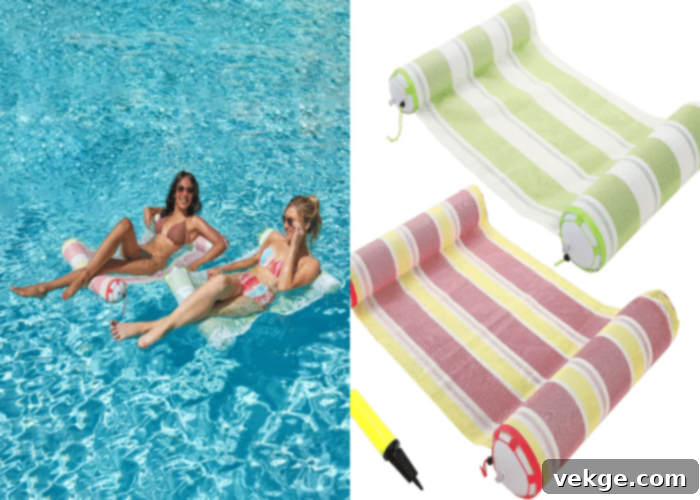
Maintaining a pristine black bottom pool isn’t limited to the water itself; it extends to everything that interacts with it. Black algae spores, along with other debris and dirt, can easily be introduced to your swimming pool on various objects. To prevent the reintroduction of black algae and other contaminants, it’s crucial to regularly clean pool toys, floats, and accessories. Wash hard plastic toys and equipment in a diluted bleach solution (e.g., 1 part bleach to 9 parts water) and allow them to air dry in the sun. Similarly, put your family’s swimwear through the washing machine after each use. Furthermore, keep the pool deck and surrounding areas clean by sweeping away leaves and rinsing surfaces. A clean environment around the pool significantly reduces the amount of debris and spores that find their way into your water, making your in-pool maintenance efforts more effective and longer-lasting.
Understanding the Allure of Black Bottom Pools
Beyond their maintenance needs, it’s worth appreciating why black bottom pools are so desired. Their dark surfaces absorb sunlight, which can naturally warm the water, often making them slightly warmer than light-colored pools. This natural heating effect can lead to extended swimming seasons and lower heating costs. The rich, dark hue also provides a striking contrast to lush landscaping, creating a dramatic focal point in any outdoor space. Many find the deep, reflective water evokes the serene beauty of a natural lake or lagoon, offering a more organic and sophisticated swimming experience compared to the bright blue of traditional pools.
Conclusion
The effort required to keep a black bottom pool immaculately clean and well-maintained is undoubtedly a rewarding investment, given its unparalleled beauty and the unique ambiance it brings to your home. By diligently adhering to these crucial guidelines—from routine skimming, brushing, and precise water balancing to strategic shock treatments and expert inspections—you can ensure your black bottom pool remains a stunning, welcoming, and healthy aquatic sanctuary. Its deep, reflective waters will continue to be a source of endless enjoyment and serene relaxation for many years to come.
Remember that consistent care is the cornerstone of maintaining this beautiful feature. While black algae can be particularly challenging, understanding its nature and applying targeted treatments, alongside general preventative measures, will keep your pool spotless. As you luxuriate in your sparkling black pool, let the commitment to its cleanliness serve as a testament to sustaining a truly beautiful and tranquil retreat.
We’d love to hear from you! Comment below and let us know which methods you find most effective for caring for your black-bottom pool or if you have any secret tips to share.
